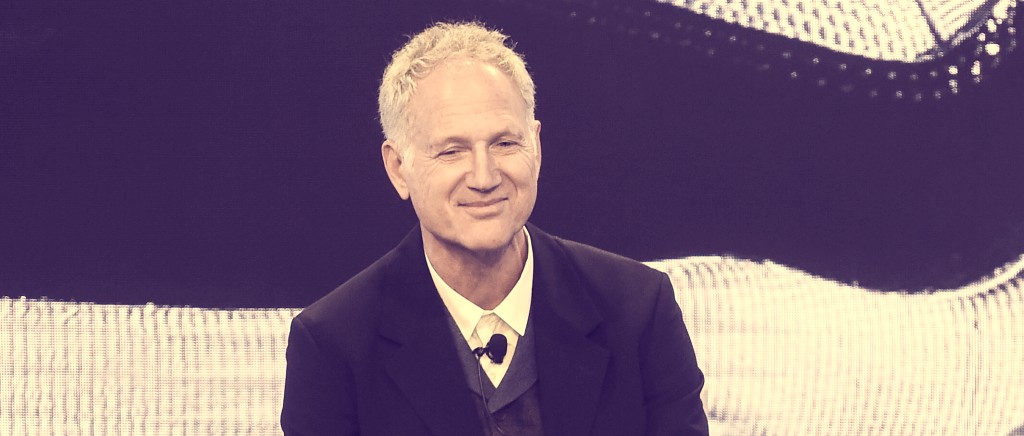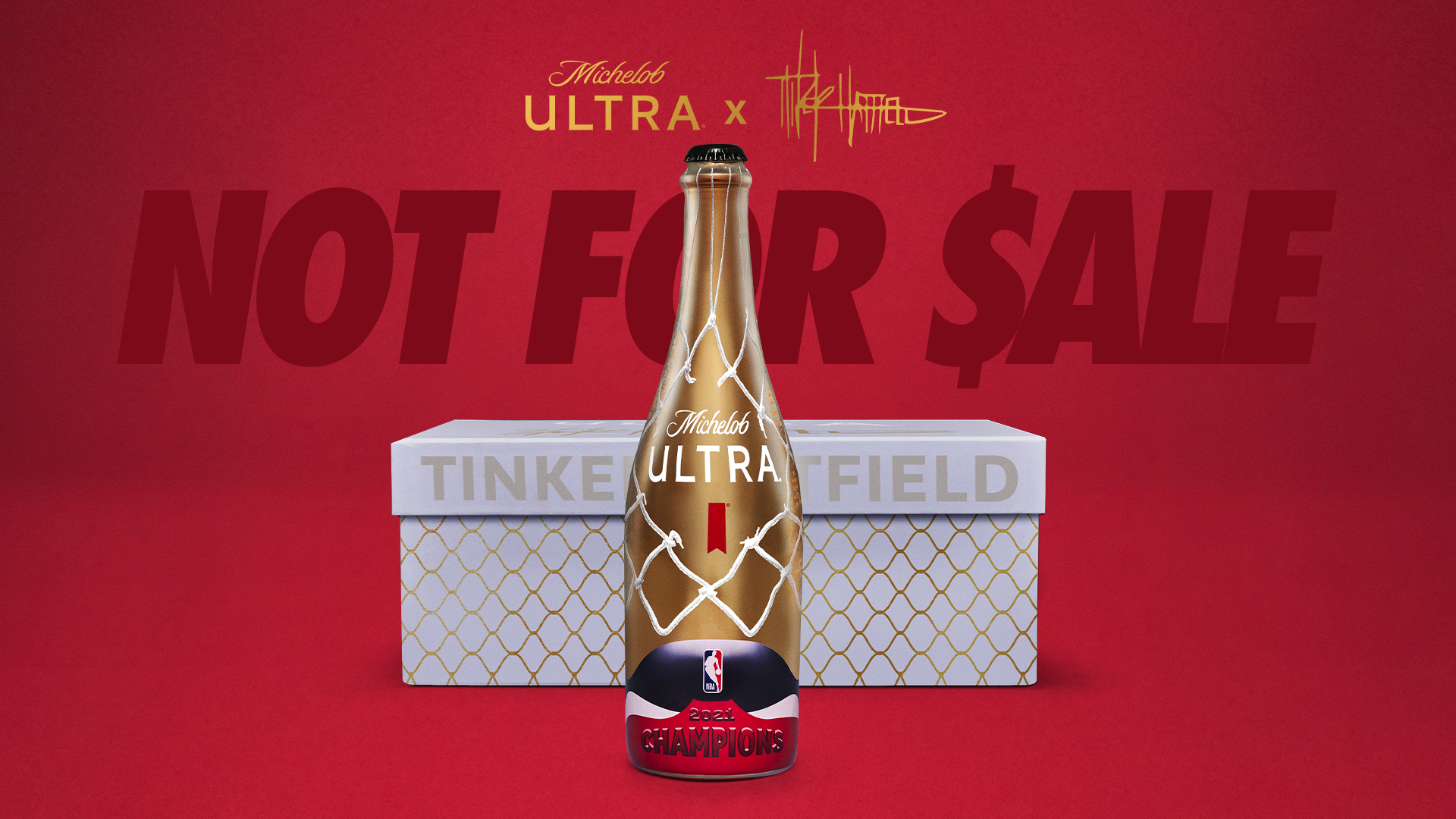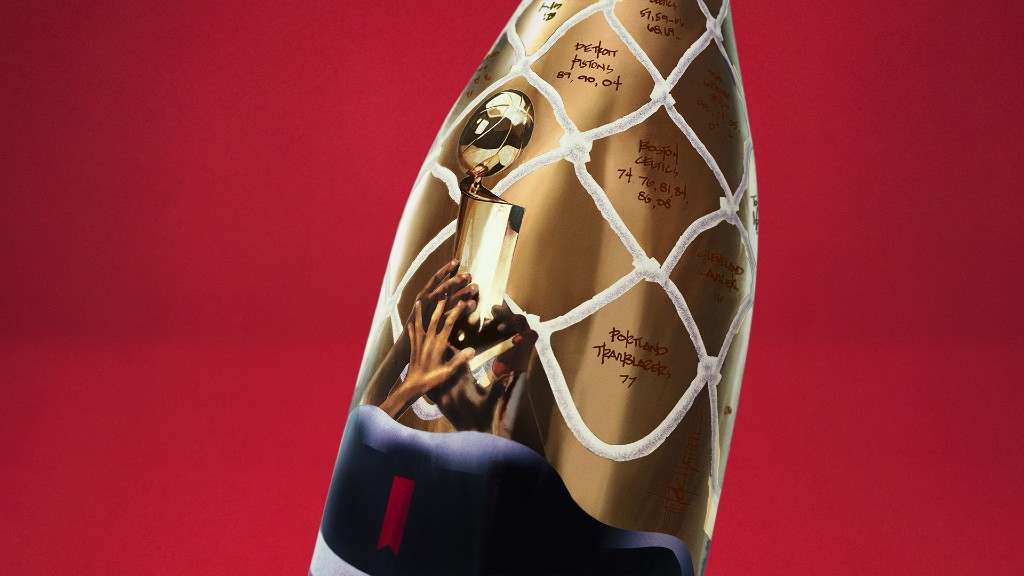
Tinker Hatfield is as legendary a figure as there is in the sneaker world. The man who Phil Knight credits with saving Nike by keeping Michael Jordan with the company after he took over designs for Jordan’s signature line starting with the Air Jordan 3 has worked on countless iconic sneakers. Currently, he serves as Nike’s Vice President for Design and Special Projects.
For someone who has created many of the world’s favorite sneakers, however, the explosion of sneaker culture still baffles him a bit, as he notes he grew up in a time where “everybody just wore Converse or whatever.” He finds it best to not try and figure that part of the equation out, but instead focus on coming up with something new and always looking to progress sneaker design forward, just as he did when he started in the 1980s.
Earlier this week, Dime got to speak with Hatfield on behalf of Michelob Ultra, with whom he partnered to design the Not For Sale bottle that will be wheeled into the winners’ locker room after the NBA Finals and a select number will be available for fans to win after the series ends. Hatfield spoke about storytelling through signature sneakers and balancing design with performance, why he sometimes has to tell athletes they won’t make shoes that look like the Air Jordan line for them, the challenges of progressing designs forward when an athlete falls in love with a certain feel, what its been like seeing the interest in his original designs, and how he created his bottle concept for Michelob Ultra.
To start, how did this partnership with Michelob Ultra come together for the Not For Sale bottle and what drew you to this project?
Well, it came out of the blue, it was a request through someone that I know and who has connections with people in New York and also in sports in general. And so Michelob essentially reached out to me and asked me if I would do it. And I felt like Michelob being an official sponsor the NBA and the WNBA, and I think they present themselves in a classy way, and really, have good advertising and have a fine product that’s a little … I guess you could say for a lot of people, it’s a little healthier, because it doesn’t have so many calories and all that. So I thought, we’re not in the alcohol business here at Nike, so there’s no competitive conflict. So it’s one of those very few projects that I decided, you know what, this could be fun, so I took it.
There you go. How did you come up with the design for the bottle and what did you want it to say?
Well, Michelob and Dinner Party, their contract design firm, they did a good job of explaining to me the context, which was it was going to be limited edition, and it was going to show up in the locker room after the game. And I’m like, okay, so it’s not going to be seen all that often and it’s not going to be that available, and it’s going to need to be noticed in a chaotic environment — the winner’s locker room after championship, you can’t get much more chaotic than that.
So, I figured that I needed to be bold, and I was looking for that one thing that would just stand out against the background of the bottle itself. And so I’m like oh, the winner gets to cut down the net, and I started drawing scissors and nets and hands cutting, and it sort of led me to the fact that, well, we could just take a net that’s been cut off the rim and drape it right over the bottle. And that was really the beginning of the design process, and that set the stage for all the other details that came later. But it was good. So, I think, when that the camera is in that locker room, I think those bottles are going to be quite unique and stand out because of that stark white net draped over the bottle.


Storytelling is obviously something that you’re you’re passionate about with the sneakers that you work on. I want to talk specifically about that in signature sneakers, because you’re trying to tell someone else’s story. How do those conversations go and what have you learned about getting to what the athlete really wants to be able to say with a shoe?
That’s a great question and I think there’s two goals for me. The way I see it is that I need to create a project, and in this case, it would be a performance footwear design that is better than its predecessor, and is tuned in to the specific athlete as best as possible so that they feel good in it, they can play well in it, and also, their career may be enhanced in a longevity situation, because the shoes are protecting them more. But it has to all be done in a lightweight form so that everybody feels quicker, and, you know, speed is very important in most sports. So that’s really the beginning process is to actually kind of get to this kind of criteria list, that helps me check off those kinds of boxes: traction and lightweight and stability and the right amount of cushioning.
And then I can move into the second phase, which is all about what the shoe looks like and is there a narrative or a backstory that helps describe the actual athlete, some of their interests, what they like, either in color or maybe there’s something even more involved. There might even be a statement or a saying or something, and there’s a lot that that gets then layered on to the original sort of problem solving and performance so then this other layering of design occurs. So, working with athletes, pretty much all of these — I think have been designing shoes for 35, 36 years — it’s been very consistent, that part has been consistent.
Yeah and some guys, you can see this in some of the sneaker lines, they fall in love with a design or a feel. How do you balance that, where you know they like a certain thing but you want to keep progressing the shoe? Because you look at some lines and it’s very subtle changes, and then others are willing to take more more risks and bigger swings, how do you deal with that as a designer?
I think that’s really perceptive of you to know that there are these differences in the athletes’ personality and the way they play, and also the way they see themselves and think. And I have to tune into that, and I can’t, if someone is not interested in being quite so risky and maybe flashy or what have you, I have to, like, still create an interesting product that suits them. And so, Pete Sampras was quite different than, say, Andre Agassi in tennis as an example. And then you can see those same patterns are true in basketball as well. So, you know, individual athletes have different interests and their tolerance for being more risky can vary, quite a lot.
So it was always fun with Michael because he just — Michael Jordan — he loved to zig when everybody else was zagging, so he was really open minded. And Kobe Bryant after that, and LeBron as well, and of course KD, and a lot of athletes sort of in succession have, I think, learned probably from Michael Jordan, and been much more open minded than possibly they might have been otherwise.
Yeah I wanted to ask about the legacy of the original Jordan line, because like you said, here are so many iterations and each one popped in its own way. How have you seen how that impacts how guys want their shoes to look and feel and present?
Some people will literally come in and say, “I love Air Jordans, can you make mine look a little bit like that,” and we go, “Nah, we want to know your story, and you know we can treat you like we treat Michael Jordan, but your design should be unique to you, not to anyone else.” So, sometimes there’s a little bit of a conversation like that. Other people come in and they already have their own sort of a vibe about how they want the project to proceed, and they’re looking for uniqueness right off the bat. They’re looking to make a personal statement, along with having high performance dialed in for them. We jump around and different athletes have different sorts of agendas and/or tolerance for certain ways to design a product, so I try to be really flexible that way.
And I think that even with Michael, as you mentioned, from year to year, it was almost like we were jumping, like he was a different player from one year to the next, even though he wasn’t as much. I mean, he was always learning and getting better, but he was also interested in being deceptive as a player, hiding his tendencies so that he could surprise people, especially at the end of the game and help win the game. And he was like that with the footwear. He wanted to always surprise people with the next new design. And we found that relationship between him and I, and me being interested in … we’re risk takers, I guess, in nature. So that worked out great. We had a wonderful run and a relationship that is still strong to this day. So we were kind of on a beam, kind of like, “Yeah, this is, we’re going to do, this may piss off a bunch of people that are expecting one thing, but we’re okay with that because we want to keep changing we keep changing it.”
Finally, the interest in some of your original designs and seeing those come to life, obviously the Tinker 3s were kind of the ones that I think standout. Has that surprised you, that there’s been the interest in seeing some of those original designs and then also just bringing those to life, and what was that like for you, because obviously you’re so focused on telling their story, but this a chance to tell your story as well?
Oh yeah, you know, I would have to just simply say that I didn’t prognosticate or think that these things would be such a big part of modern culture at this point and time. But the reality is, I think the designs, the athletes themselves, Nike’s ability to tell stories, and my ability to kind of react to all of the above just has worked out really well. I think my timing, you know, where I started, when I started, no one had thought to take footwear design into this higher level design kind of process beyond the performance side. So that was fun, and I feel like I don’t really necessarily understand why everybody is so crazy over sneakers, because I personally come from an era when everybody just wore Converse or whatever. So having been involved in helping sort of move this into a whole other realm has been really fun, and I’m not going to try and even understand all of it, because then I’ll get all screwed up, but it’s best to just keep trying to do a good job and thinking up some new stuff.
